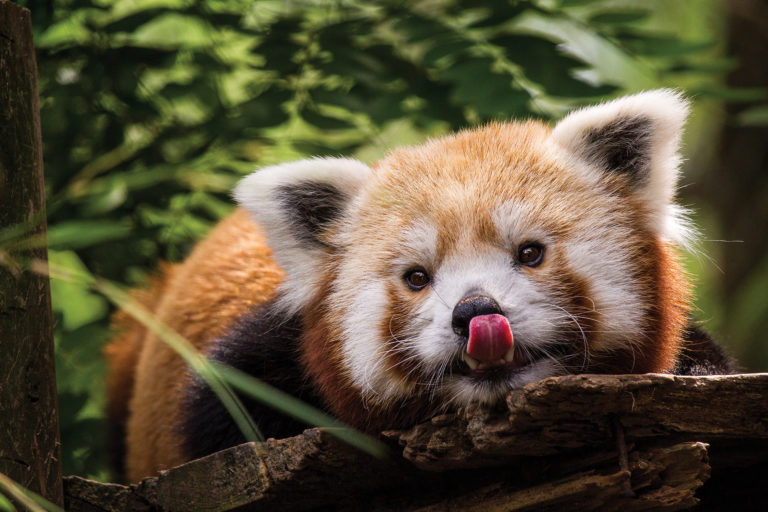

Sloths have poor eyesight and hearing so they rely heavily on touch and smell.They use their long limbs to easily push themselves forward through the water. Sloths are surprisingly good swimmers.The Two-toed Sloth is one of the slowest mammals on earth!.

Learn more about conservation efforts for sloths at SeaQuest today. Sloths continue to face challenges to their existence such as habitat destruction, road-building, traffic, power lines, tourism, and the pet trade. Significant deforestation in South America may soon prove a threat to others. The maned three-toed sloth is classified as “vulnerable” at present. Are Sloths Endangered?Īccording to the International Union for Conservation of Nature or IUCN, only one of the various species has a classification of “critically endangered” and that is the pygmy three-toed sloth. Digestion of leafy substances takes a considerable amount of time, so a sloth’s metabolism is very slow. Because this “green” diet isn’t very nutritious, they don’t produce enough energy, which could be the reason for their sluggish lifestyle. A sloth diet consists mostly of leaves, fruits, and other plants. The general belief is that sloths move so slow because of the low nutrition they get from their diet, as well as a lifestyle that requires energy conservation. Sloths will descend from the treetops is to use the bathroom once weekly, find a mate or expand their territory. These animals sleep, eat, mate, and raise young while hanging from tree limbs. Sloths enjoy the tall trees found in rain forests and will occupy several trees during their lifetime, but some, including the three-toed species, may spend their entire lives in the tree they were born in! They find joy high in the forest canopy, where they take in sunbathing, resting, or feeding on leaves. Where do Sloths live? Source: The Animal FilesĪncestors of sloths lived in North America but modern-day sloths mostly reside in Central and South America. Baby sloths, or cubs, make a high-pitched squeaking sound that signals to the parent that the baby is in danger. Three-toed sloths are widely known as solitary animals in the wild however, they still communicate with others of their kind via an assortment of peculiar sounds. They can grow to an average of 1.5 feet long and weigh an average of 10 lbs. Three-toed sloths are a little more active in the daytime than at night. These types of sloths also live in trees and spend most of their time upside down. Slightly smaller than their two-toed counterparts, three-toed sloths actually have very short, stubby tails that are two or three inches long.

Two-toed sloths can grow to an average of 2 ½ feet long and weigh an average of 13 lbs. They eat, sleep and even give birth upside down. Each claw can grow up to 3 inches in length! These sloths have a very strong grip and are unique in the animal world in that they do spend most of their lives hanging upside down. The two-toed sloth, or Choloepus didactylus, gets its name from the two large claws on its forelimbs. These extra neck vertebrae allow three-toed sloths to rotate their heads up to 270 degrees! Two-Toed Sloth Two-Toed Sloth Two-toed sloth species have between five and seven neck vertebrae, while three-toed sloths have eight or nine. Two-toed sloths tend to be the bigger of the two groups and have more ribs.Īll mammals have seven vertebrae in their necks with the exception of sloths and manatees. Per their name, two-toed sloths have two toes on their forelimbs, and three-toed sloths have three. Overall, sloths are divided into two groups based on how many toes they have: Two-Toed and Three-Toed sloths. There are a number of living species of sloths that can be found in different areas of the world. This is the sloth’s best defense against its predators, which include jaguars, ocelots, large bird species (such as eagles), and humans. This green fur provides an advantage as it acts as camouflage to help sloths blend in among the trees. More than half of all sloths grow these algae, which gives their coarse, brownish-gray coats a greenish hue during the rainy season. They are tree-dwelling mammals that are known for their slow movement and can mostly be found in the lowland tropical forests of South and Central America.Ĭonsidered the world’s slowest animal, they move at such a moderate pace that algae can actually grow on their fur. The sloth has a scientific classification in the order Pilosa. One of the most unique and fascinating creatures on our planet, the sloth has grown in popularity as a “favorite” among animal lovers and SeaQuest visitors.


 0 kommentar(er)
0 kommentar(er)
